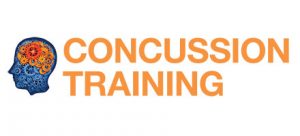Signs and symptoms of SCI
When examining a person who has been involved in an accident, it is important to elicit and document the symptoms and signs they are experiencing.
A symptom is something which a conscious person can tell you: they may describe that they are in pain or have some form of abnormal sensation (usually described as numbness or “pins and needles“). They may complain that they are weak or heavy in one or more limbs or movements, or cannot move a part of the body fully (or at all) . Sometimes they describe parts of their body feeling cold or “different” in the case where spinal cord injury has occurred.
A sign is a phenomenon that an external observer uncovers, such as deformity of the spine, or abnormality in the normal contour of the vertebrae (often referred to as a perceived “step” to the examining between vertebrae). When examining the injured person, the first responder may elicit tenderness over the spine, or outline an area of lost or diminished sensation over a part of the body. They may find weakness of a particular movement or movements when asking the injured person to move, increasing in severity to a complete absence of movement. There may be a loss of the normal tendon reflexes if the examiner is trained to test these.
In addition there may be other signs of the initial traumatic event or accident such as cuts, bruises, bleeding or obvious long-bone fractures.
In the case of spinal cord injury there are also some specific signs which include:
- abnormal positioning of the whole body due to a upper cervical or brain injury (referred to as decerebrate or decorticate posturing)
- paradoxical respiration (in this circumstance, the chest wall moves in on inspiration and out on expiration, which is the opposite of the normal movements)
- flaccidity or lack of normal tone in the skin and muscles of the face, neck, back or abdomen
- priapism (or presence of a sustained erection in males)
List of possible signs and symptoms
- Pain and tenderness over the spine
- Numbness or Paraesthesia
- Weakness or heaviness in the limbs
- Decorticate or Decerebrate positioning
- Cuts, bruises and fractures of the head
- Paradoxical Respiration
- Deformity of the spine
- Loss of sensation
- Weakness or paralysis
- Flaccidity of face, neck, back or abdomen
- Priaprism (sustained erection)


